Hawai‘i’s Last Dunes Are Home to Species Found Nowhere Else on the Planet
A nature preserve on Moloka‘i reveals rare life forms—some ancient and others just newly established
/https://tf-cmsv2-smithsonianmag-media.s3.amazonaws.com/filer/76/8c/768c71de-373e-4d7c-8de1-12c5ae7322f1/moomomi_beach_molokai.jpg)
This is not the Hawai‘i from the airplane magazine spread. No palm trees, beach chairs, umbrellaed cocktails, or perfect surf breaks. I’ve come to the island of Moloka‘i, tucked between O‘ahu, Maui, and Lāna‘i, to see a slice of Hawai‘i few tourists choose to see—a stretch of coastline covered with dunes, hardy plants, and rare species found nowhere else on the planet.
From mountaintop forests to coral reefs, the Hawaiian Islands, like most isolated island groups, are an evolutionary playground for plants and animals. A whole suite of species evolved into new forms after arriving on these volcanic landmasses. Some of the most interesting are on display on Moloka‘i’s windswept northwestern shore in the Mo‘omomi Preserve, the site of one of Hawai‘i’s last intact sand dune ecosystems.
To get to Mo‘omomi, I drive down a heavily rutted old pineapple plantation road until an empty grass-covered parking lot overlooking the ocean comes into view. As I hop out of the truck, a frigatebird overhead catches the wind and soars west over kilometers of cliffs, beaches, and dunes. When I start to walk in the same direction, those powerful gusts pick up the beach and conspire to sandblast the hair off my legs. I’m too excited to concern myself with discomfort.
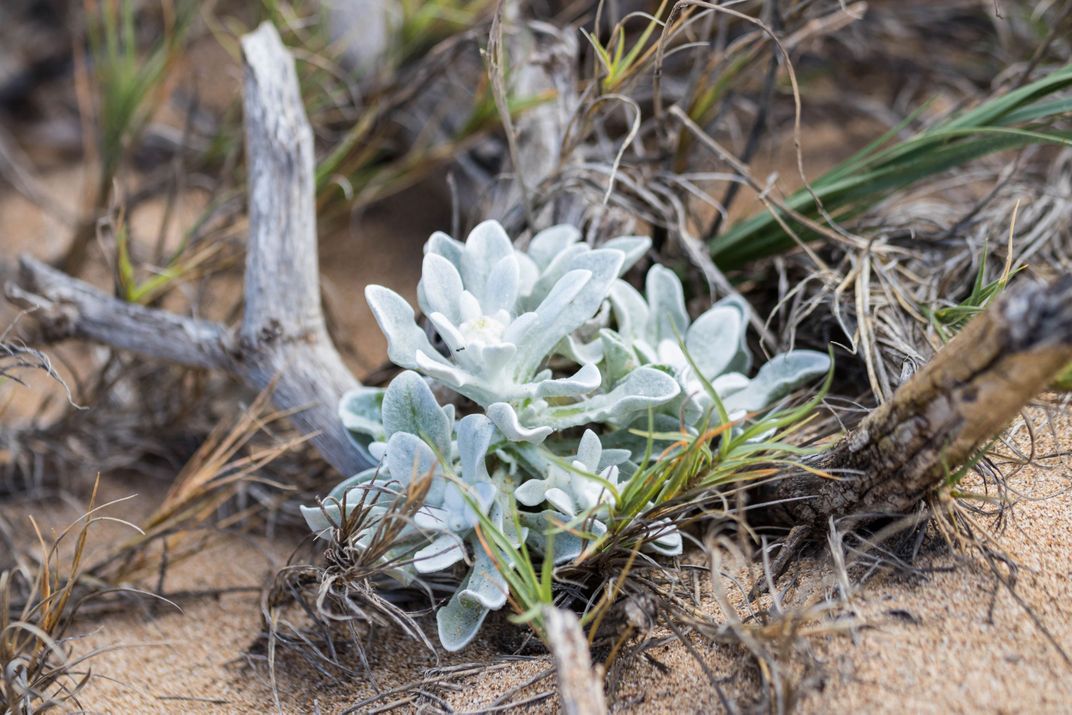
Mo‘omomi is unlike any place I’ve seen in Hawai‘i. Vibrant green vegetation spurts out from the dunes, framing the beach and providing a stark contrast to the cream-, orange-, and rust-colored sand and stone and to the crashing whitecaps. These dunes are more than sand. Some of the plants solely exist here. For some insects, this place is their last refuge from extinction. For some seabirds, extirpated centuries ago, it’s become a haven for nesting again.
The shifting, windblown habitat at Mo‘omomi is easily damaged and, up until the late 1980s, things looked bleak. The area belonged to the Moloka‘i Ranch, which at the time owned almost half of the island. The ranch’s cattle grazed and trampled native vegetation. In its place grew invasive plants, like kiawe, a spiky mesquite tree from South America that monopolizes the already limited moisture in the soil. In 1988, after decades of degradation, forward-thinking individuals with the Nature Conservancy acquired 373 hectares from the ranch to create the current preserve, a roughly Central Park–sized haven for rare and endemic species in this even rarer habitat.
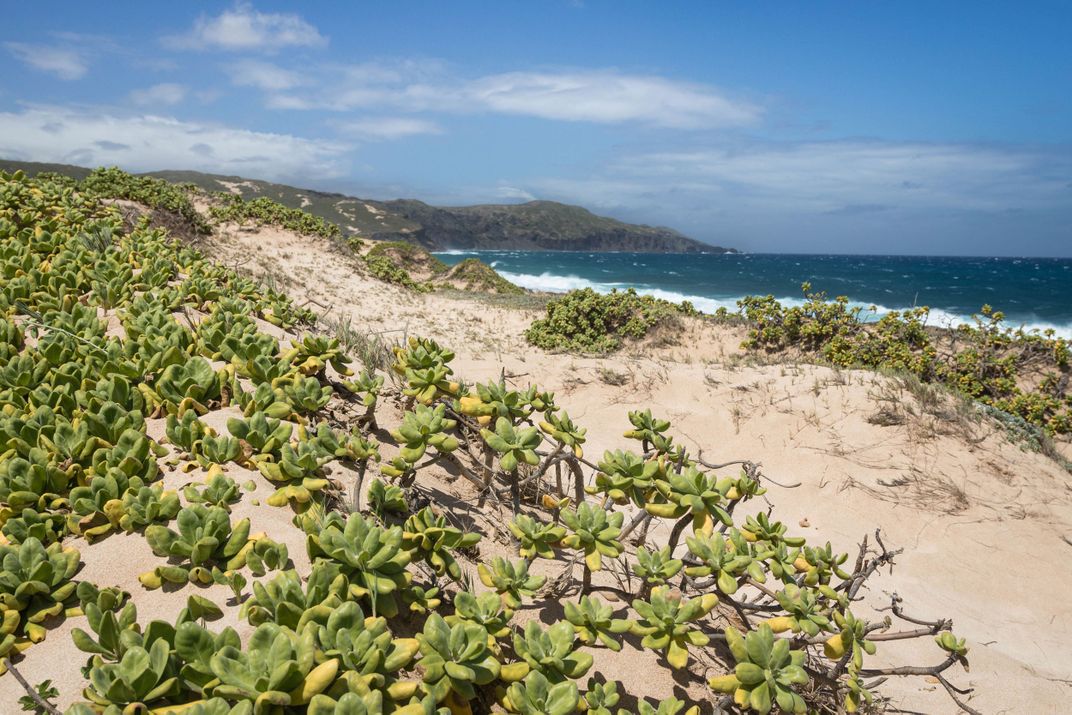
I notice a bright-white bone shard the size of a butter knife half buried in the sand. It looks like it may be a femur, but from what animal or how old? I have no idea. The only animals I’ve seen are a lone cockroach and a few seabirds flying overhead. Some of Mo‘omomi’s most notable species are now only memories. A giant flightless duck and a long-legged owl lived here hundreds to thousands of years ago. Now, they’re extinct.
Near the bone, shells poke out from the sandstone cliffs—thousands upon thousands of white spirals glinting in the sun. My first thought is that these are marine snail shells from a time when ocean levels were higher. I barely stop to take a photo. I assumed the snail-sleuthing portion of my trip was over. Earlier in the week, I scoured the mountaintop bog forests of Moloka‘i in search of Hawai‘i’s renowned endemic land snails. Sand dunes are not where I expected to find more examples of moisture-loving land snails.
I was wrong. Later, after speaking to experts, I will find out that the shells in the dunes are indeed from land snails, but different than those I found in the mountains. The remains at Mo‘omomi are considerably older. And the species are extinct. Archaeological evidence and oral history show that Hawaiians fished and gathered along this coastline since at least the 12th century; the bleached snail shells tell an even older story. Preliminary dating by scientists suggests the shells are between 3,000 and 42,000 years old. The snails lived during a much wetter climatic period that predated humans in Hawai‘i. They weren’t adapted to dry sand dunes at all.
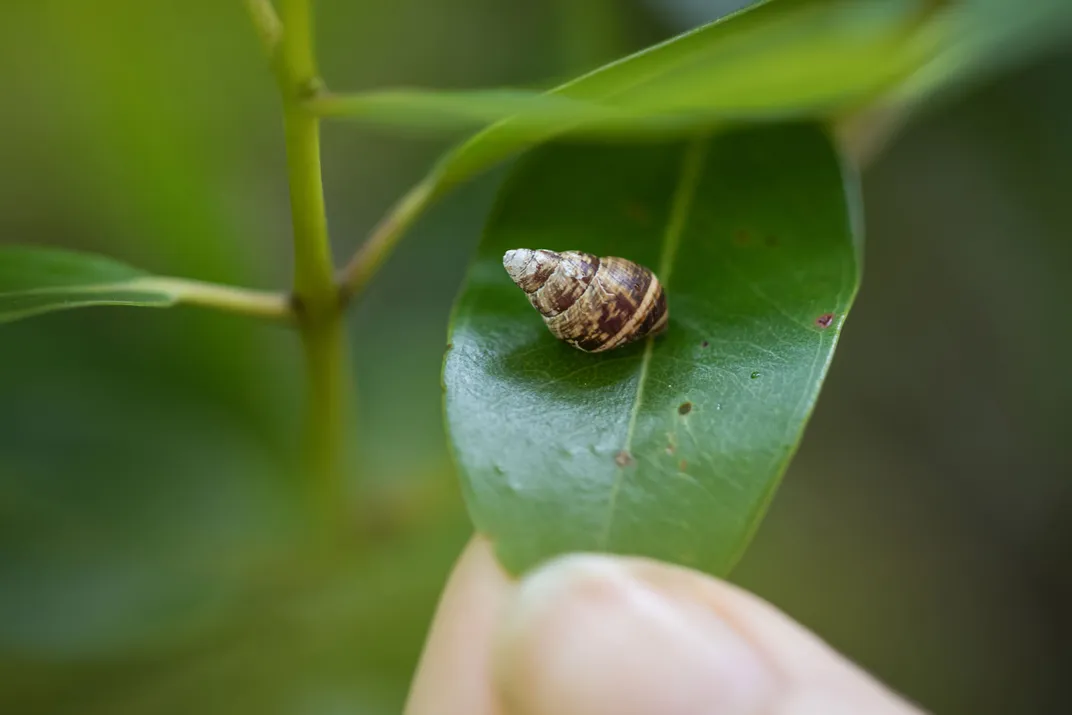
“We can trace the pace of climate change through these shells,” says Brenden Holland, an evolutionary ecologist at Hawai‘i Pacific University. “There’s been massive drying over the past 10,000 years. Areas like Mo‘omomi were probably forested down to the coast.” The snails were likely jungle dwellers that may have died as the trees gave way to sand, he adds.
By dating additional shells from the Hawaiian Islands, Holland and his team hope to piece together how the landscape evolved as the climate changed before the arrival of humans.
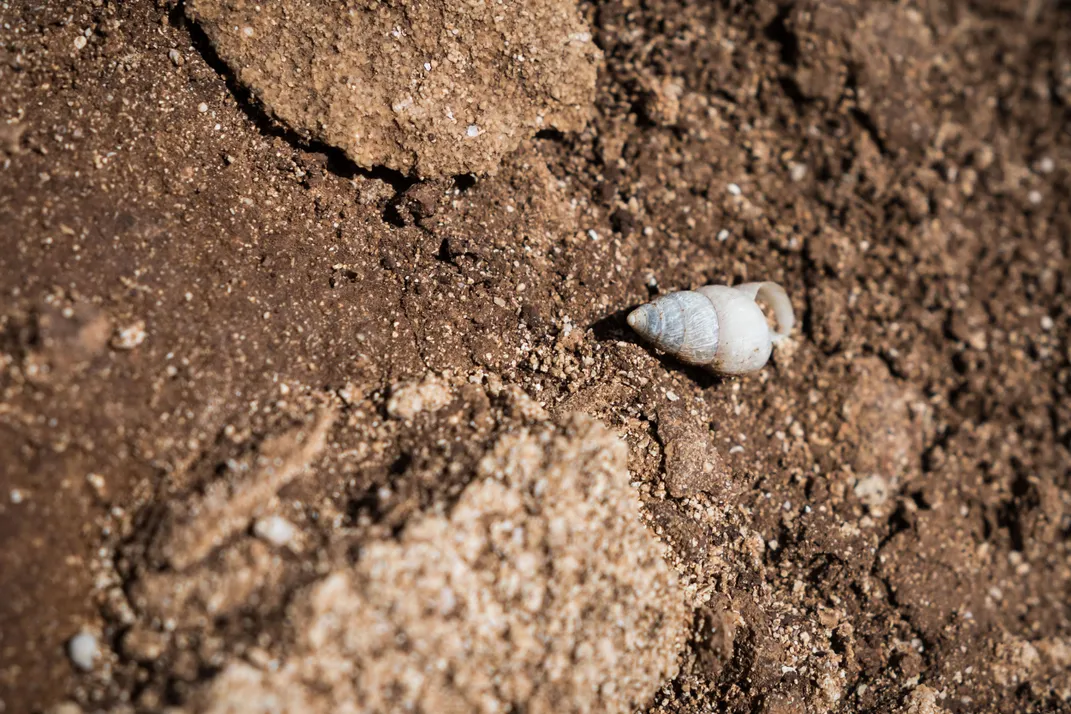
In much more recent times, another more acute agent of change came disguised as a gift. In 1867, officials visiting from Hong Kong presented the king of Hawai‘i, Kamehameha V, eight Indian axis deer, or chital, which were set free on Moloka‘i. With no natural predators, the deer flourished and caused considerable damage to native plants.
Today, the Nature Conservancy maintains high fences around sections of the Mo‘omomi Preserve to keep deer, as well as cattle, out and allow vegetation to recover. Outside the fenced area, deer droppings and footprints show the deer will roam and munch wherever they can. Without the fences, Mo‘omomi’s native vegetation would be hard-pressed to recover.
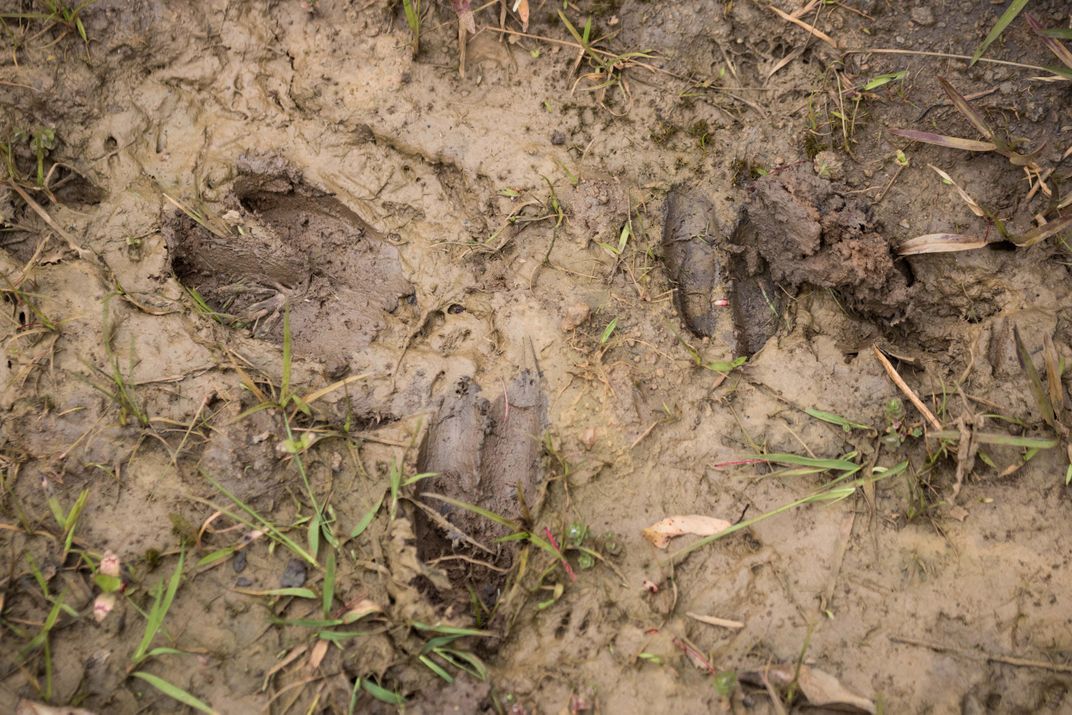
The Nature Conservancy’s efforts to keep out deer and cattle and remove invasive vegetation like kiawe over the years have borne unexpected surprises. In 1999, caretakers found a single nest belonging to a wedge-tailed shearwater (‘ua‘u kani), a seabird that digs burrows in dunes to lay eggs and raise its chicks. Once common in the region, its nests had disappeared from Moloka‘i centuries ago.
Finding the nest spurred conservationists with the organization to begin dedicated trapping efforts for feral cats, mongooses, and rats—introduced predators that eat their way through populations of ground-nesting seabirds with ease. Almost 2,000 shearwater burrows now dot the Mo‘omomi landscape, making it one of the largest colonies in the whole state.
While the shearwaters are not globally threatened, the Nature Conservancy hopes that other rarer ground-nesting shorebirds extirpated from Moloka‘i, like the Laysan albatross (mōlī), might also eventually nest at Mo‘omomi.
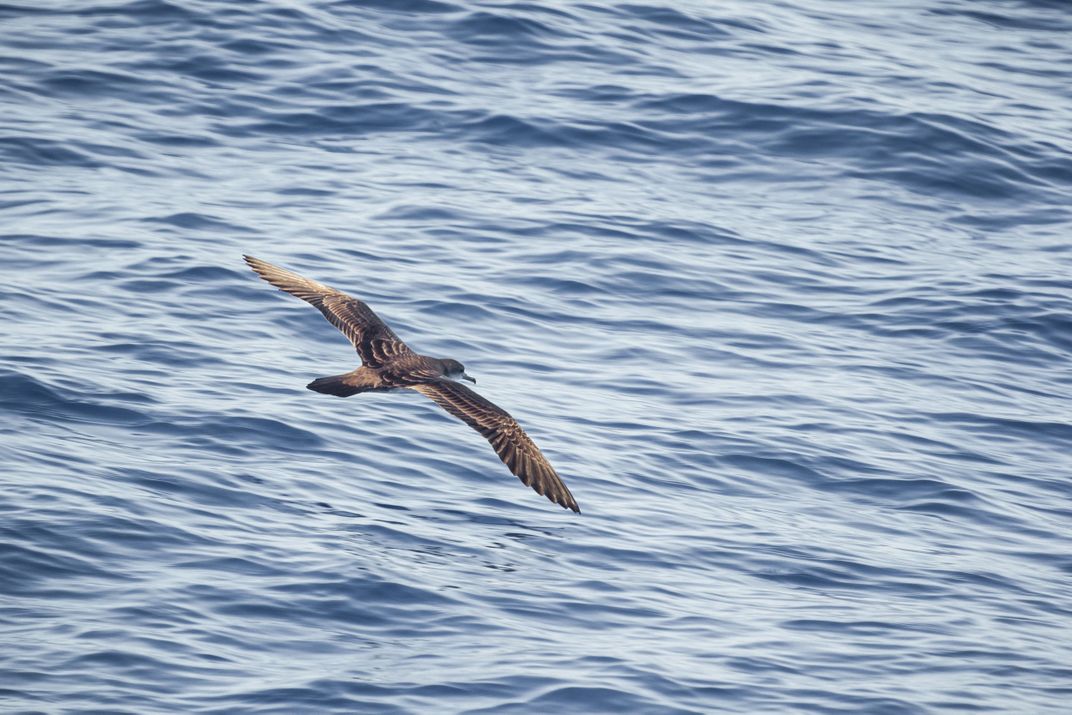
With the sandblasting wind now pleasantly at my back, I return toward the truck and look out at the crashing waves. On a headland near the parking lot, I can just make out the outline of a person fishing off the cliffs. I will later learn that conservation efforts at Mo‘omomi aren’t restricted to the land; a local group called Hui Mālama O Mo‘omomi has worked since the early 1990s to designate much of the northwestern shore of Moloka‘i, including Mo‘omomi, as a community-based subsistence fishing area. The designation is pending a public hearing with the state.
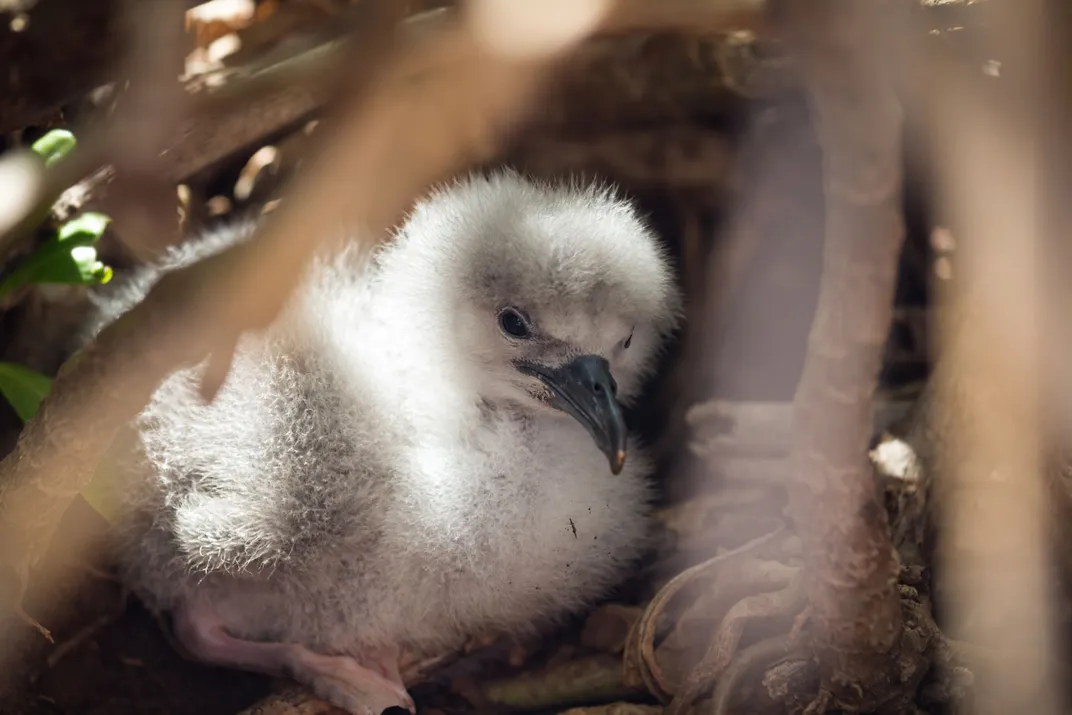
For all I’ve seen at Mo‘omomi, I’m sure I’ve overlooked so much more. When I get home, I’ll learn that the fisherman on the cliff was likely fishing with pono—a set of principles for sustainable harvest, such as observing no-take periods that allow fish to spawn based on the lunar calendar. And I’ll realize I should have looked for a species of bee, the yellow-faced Hylaeus hilaris, which counts Mo‘omomi as its final stronghold. Long after I’ve brushed off the sand that stung my legs, this sliver of Hawai‘i will continue to leave a mark.
Related Stories from Hakai Magazine:
Planning Your Next Trip?
Explore great travel deals
Smithsonian magazine participates in affiliate link advertising programs. If you purchase an item through these links, we receive a commission.